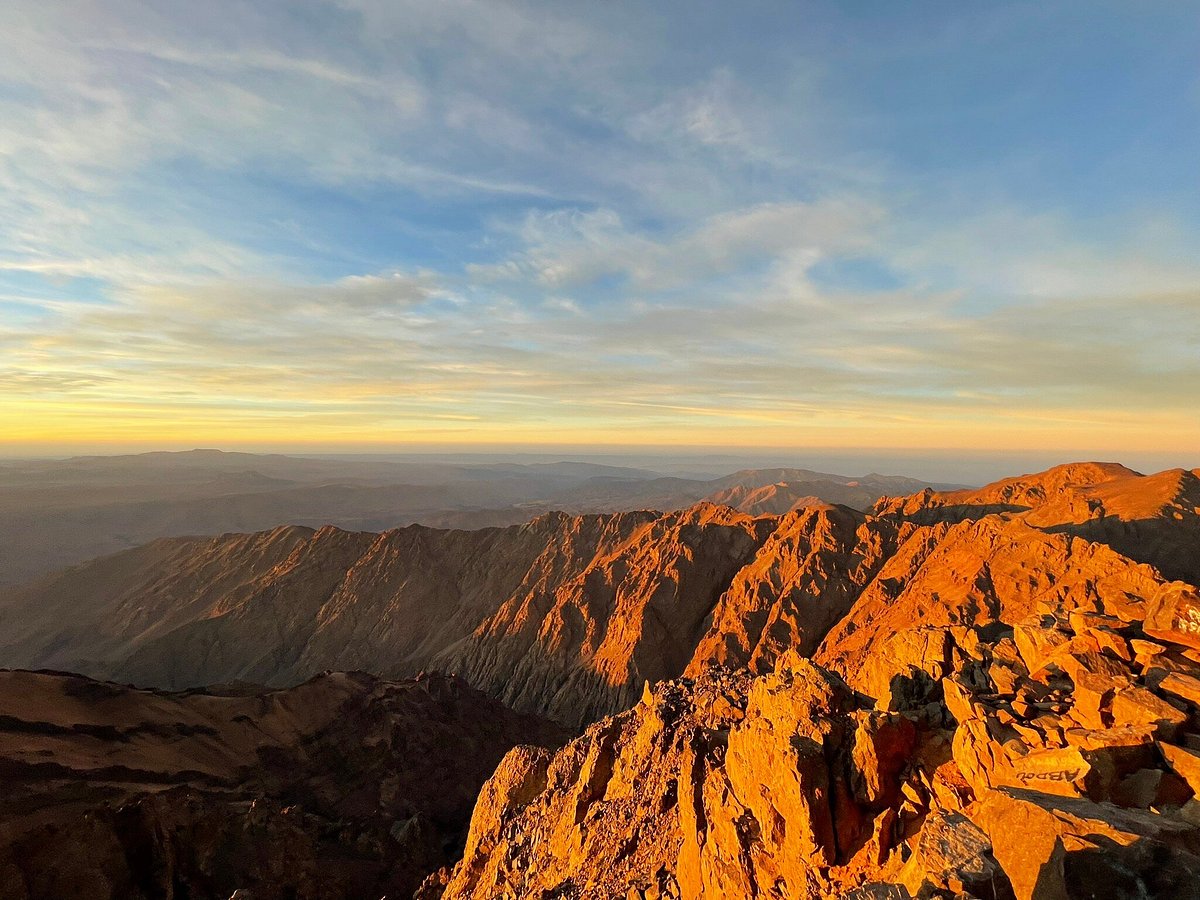Why are Toubkal Mountains So Prominent?
Unveiling Nature's Majesty: The Enigmatic Prominence of Toubkal Mountains
Toubkal Mountains

Standing majestically amidst the rugged landscapes of southwestern Morocco, the Toubkal Mountains command attention and awe with their towering peaks and breathtaking vistas. Home to Mount Toubkal, the highest peak in Morocco, the Atlas Mountains, North Africa, and the Arab world, this iconic mountain range has long captivated the imagination of travelers, adventurers, and nature enthusiasts alike. But what is it that makes the Toubkal Mountains so prominent? In this comprehensive exploration, we delve into the geological, geographical, and cultural factors that contribute to the prominence of the Toubkal Mountains, uncovering the secrets of their enduring allure.
Geological Origins: The Backbone of North Africa:
At the heart of the Toubkal Mountains lies a geological legacy that spans millions of years, shaped by the forces of tectonic activity, volcanic eruptions, and erosion. The Toubkal Mountains are part of the Atlas Mountain range, which stretches across Morocco, Algeria, and Tunisia, forming the backbone of North Africa. The mountains were formed during the late Paleozoic and Mesozoic eras, as the African and Eurasian tectonic plates collided, giving rise to the vast mountain ranges that define the region today.
The Toubkal Mountains owe their prominence to the intense tectonic activity that shaped their rugged terrain, resulting in the uplift of massive blocks of rock and the formation of deep valleys and gorges. Over millions of years, the forces of erosion sculpted the landscape, carving out steep cliffs, rocky ridges, and dramatic peaks, including the iconic summit of Mount Toubkal.
Altitude and Elevation: Reaching for the Sky:
At an elevation of 4,167 meters (13,671 feet), Mount Toubkal towers above its surroundings, casting a commanding presence over the landscape. As the highest peak in Morocco and the entire Atlas Mountains range, Mount Toubkal holds a special place in the hearts and minds of those who venture into its shadow. The sheer altitude of the Toubkal Mountains contributes to their prominence, offering breathtaking panoramic views of the surrounding valleys, villages, and distant horizons. Just as we know Why are Mount Bwahit So Prominent?
The lofty heights of the Toubkal also play a crucial role in shaping the local climate and ecosystems, creating a unique environment that supports a diverse array of flora and fauna. From alpine meadows and cedar forests to rocky slopes and snow-capped peaks, the Toubkal Mountains are home to a rich tapestry of landscapes and habitats, each with its own beauty and significance.
Cultural Significance: A Symbol of Identity and Heritage:
Beyond their geological and geographical importance, the Toubkal Mountains hold deep cultural significance for the people of Morocco and the Berber communities who have inhabited the region for centuries. For the Berber people, the mountains are not only a source of sustenance and livelihood but also a symbol of identity and heritage, woven into the fabric of their traditions, folklore, and way of life.
The Toubkal are steeped in myth and legend, with stories passed down through generations that speak of heroic deeds, mystical beings, and the enduring spirit of the mountains. For the Berber communities, Mount Toubkal represents a sacred landmark, revered for its beauty, strength, and spiritual significance.
Tourism and Adventure: Drawing Visitors from Afar:
In recent years, the Toubkal Mountains have emerged as a popular destination for tourists, adventurers, and outdoor enthusiasts seeking to explore the natural beauty and cultural heritage of Morocco. The region offers a wide range of activities and experiences, from trekking and mountaineering to cultural tours and eco-adventures, attracting visitors from around the world.
The prominence of the Toubkal as a tourist destination can be attributed to their accessibility, stunning landscapes, and diverse array of attractions. Whether summiting Mount Toubkal, exploring traditional Berber villages, or marveling at the scenic beauty of the Atlas Mountains, travelers are drawn to the region’s unique blend of adventure and culture.
Conservation and Sustainability: Protecting a Precious Resource:
As the Toubkal Mountains continue to attract visitors and adventurers, efforts are underway to ensure the long-term conservation and sustainability of this precious natural resource. The establishment of Toubkal National Park in 1942 marked a significant milestone in the protection of the region’s biodiversity, ecosystems, and cultural heritage, providing a framework for sustainable tourism and environmental stewardship.
Today, organizations and local communities are working together to preserve the integrity of the Toubkal, implementing measures to mitigate the impacts of tourism, protect fragile ecosystems, and promote responsible travel practices. By fostering a culture of conservation and sustainability, we can ensure that future generations will have the opportunity to experience the majesty and wonder of the Toubkal Mountains for years to come.
Conclusion:
In conclusion, the prominence of the Toubkal Mountains is a testament to their geological, geographical, cultural, and ecological significance. From their towering peaks and rugged landscapes to their rich cultural heritage and sustainable tourism practices, the Toubkal embody the spirit of adventure, discovery, and conservation.
Know More about Toubkal Mountains.
What Are The Tourist Places Nearest to Toubkal Mountains?
When Were Toubkal Mountains Formed?
Where Are Toubkal Mountains Located?
Who Discovered Toubkal Mountainsl?
How to Reach Toubkal Mountains?




